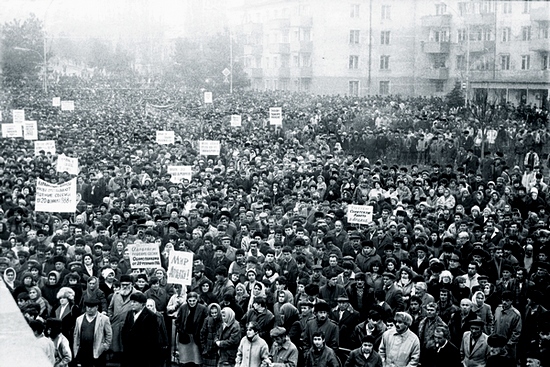“The Artsakh movement cannot end. The endpoint of the movement should be a free and independent Armenia. After that, you have to fight for a long time so that your country remains strong,” said Levon Hayryan, President of “For the sake of Hadrut” NGO, one of the organizers of the Artsakh movement of 1988, at a meeting with journalists at the “Noyan Tapan” news agency today. What is the origin of the Artsakh movement? Is it the year 1988, as is usually presented? “It started from the day when Artsakh was handed over to Azerbaijan. There have been large and small confrontations in Artsakh, during which many Artsakh citizens were deported from their homeland,” said Levon Hayryan.
He stated that the people of Artsakh have never come to terms with being separated from RA. “There have always been factions on this issue in all regions. Artur Mkrtchyan, the first president of Artsakh, Emil Abrahamyan (died two years ago), Grisha Hayrapetyan, Manvel Sargsyan, and Vigen Grigoryan were fellow members of Hadrut. In 1985, we were already informing the people, printing maps, writing historical materials, covering the events of Chardakhlu, who the people are, what the homeland is, and why we found ourselves in this situation.
Then we went to the signature collection. At first, it was challenging because people refused to sign; they feared the Soviet “KGB” was watching. Then it gained momentum. We started a telegraphic campaign towards the Kremlin. We sent tens of thousands of telegrams to Moscow from every village. They held meetings, expressed disobedience to Azerbaijan, and sent decisions from village centers to the Kremlin.”
Read also
According to Levon Hayryan, the Soviet government sent educational brigades to Artsakh to convince the people not to follow the calls of “those extremists and cowards.”
“Instructors came to explain to the population of Hadrut that it was not allowed, that we were inciting inter-ethnic enmity. The people got angry, surrounded the building, and did not allow them to leave. It was no longer a movement but an uprising. We did much work for two years and enlightened people, explaining and collecting signatures. There was a “variety” of devotees that everyone knew everyone in every region. Ultimately, this had to be because they were coming to slaughter us. Let me remind you that movement was the grace of Igor Muradyan. How did the people wake up? In 1988 In September, my boss called me and waved his finger and said, “You will stay away from Emil and Arthur.” He did not explain the demand. The movement grew and strengthened so much until December that my boss said: I am a patriot. This is how the people woke up. Every person considers the beginning of the movement from the day he learned about it.
Luiza SUKIASYAN





















































